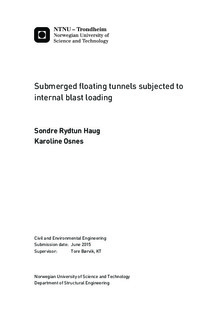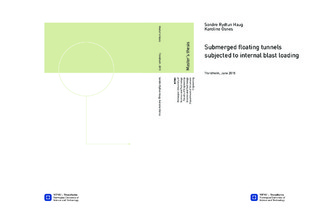| dc.description.abstract | Design of structures against blast loading is of great importance and has received a lot of attention in recent years. The Norwegian Public Road Administration (NPRA) are currently investigating the potential for eliminating all ferries on the highway route E39 between Trondheim and Kristiansand. One of the critical points is the crossing of the Sognefjord, where a submerged floating tunnel (SFT) has been suggested as a possible crossing method. For an SFT, an internal explosion, due to e.g. accidents or terrorist attacks, can be extremely critical. Concrete will most likely be chosen as the main building material, and a comprehensive investigation of the material's response to blast loading is therefore important. As full-scale experiments are not appropriate, numerical tools as the finite element method (FEM) will be applied.
For this thesis, numerical simulations of concrete plates against blast loading were conducted in three different finite element codes: IMPETUS Afea Solver, LS-DYNA and Europlexus. In each of these codes, different material models were investigated: the Holmquist-Johnson-Cook (HJC) model, the K&C Concrete Damage Model (CDM) and the Dynamic Plastic Damage Concrete (DPDC) model. It was mainly focused on the HJC model, while the others were investigated for selected problems. In order to validate the numerical models, it was performed experiments on 50 mm concrete plates subjected to blast loading. The HJC model proved to require an immense tuning of the material parameters to approach the experiments, and in addition, predicted a behaviour that was too ductile. The CDM model showed a much greater potential as the predicted behaviour seemed reasonable with no tuning of the parameters. The DPDC model was applied in a fluid-structure interaction (FSI) analysis, but this type of analyses appeared to be redundant for the problem at hand.
As an alternative to explosive detonations, the new shock tube facility at Structural Impact Laboratory (SIMLab) was used. The facility proved to be a great alternative to using explosives, in addition to being a safe and controllable approach when investigating blast loading. | |

